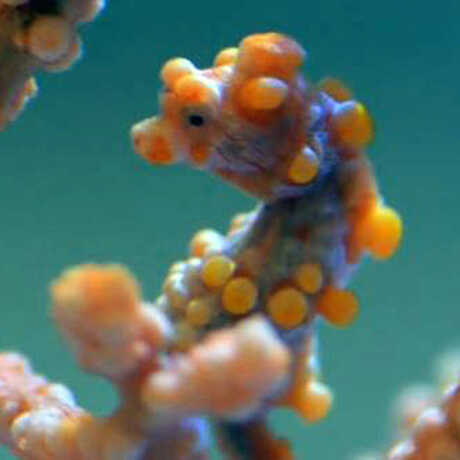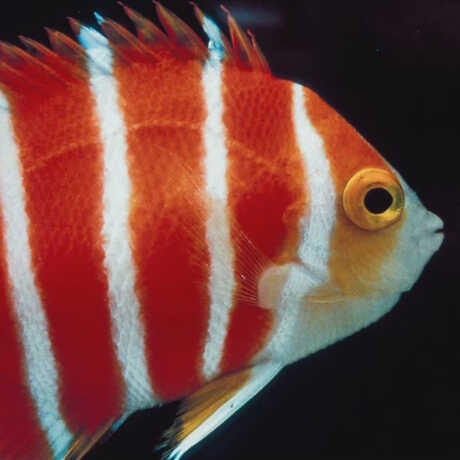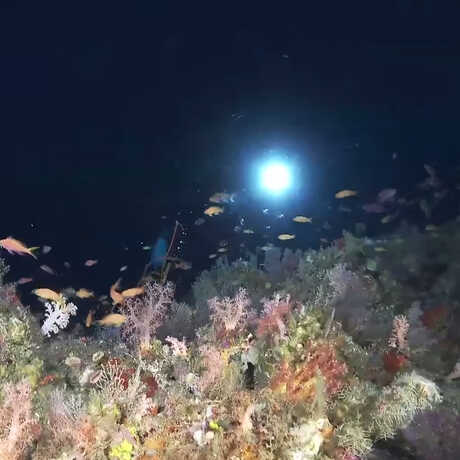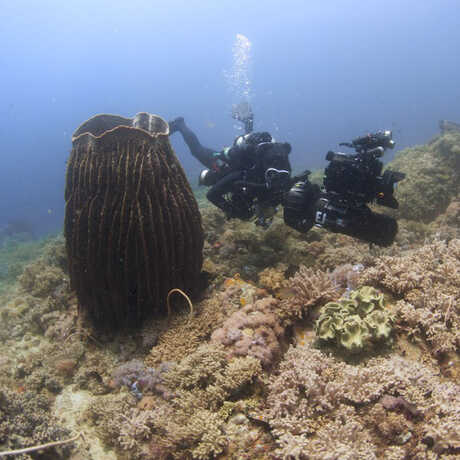This species is common in Japan, with a range extending across the western Pacific to the Red Sea and south to the Great Barrier Reef.
One-Striped Anthias
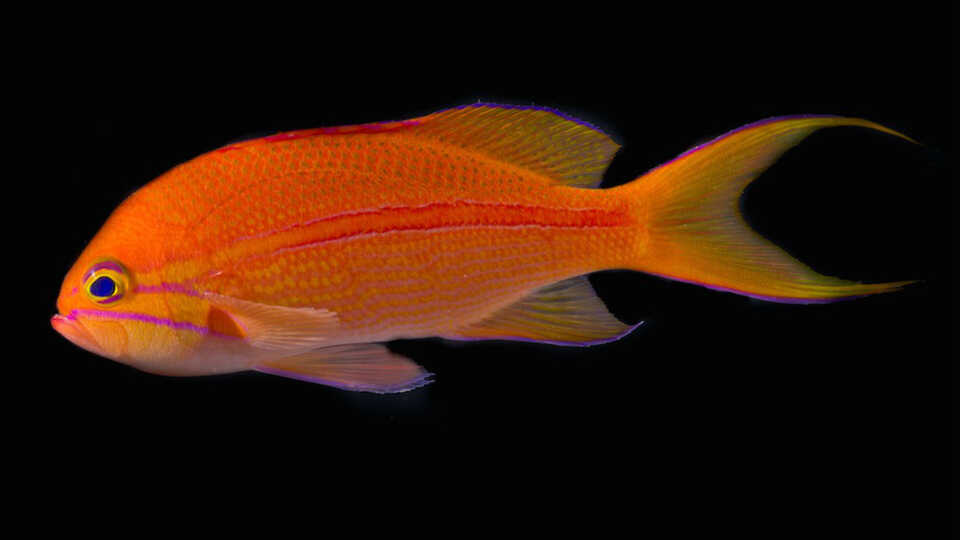
Photo by Tim Wong
Three hundred feet below the ocean's surface—tucked into a small cranny in a pinnacle rising from the Philippine seafloor—Steinhart Aquarium Director Bart Shepherd spotted a bright flash of tangerine. Even before dropping out of the boat that morning, he says, “I’d had my eye on a particularly colorful species.” In the dim light of the “twilight zone” (depths few humans have ever seen, much less visited), he’d found it: Pseudanthias fasciatus, the one-striped anthias.
Anthias fish are commonly seen in aquariums—their ultra-saturated colors make them hard not to love—but the one-striped anthias is a rare find because it makes its home anywhere from 65 to 500 feet below the ocean's surface. At these depths, the species is relatively abundant, and the vibrant colors we see at shallower depths or under artificial lights actually keep it hidden among the other fish that occupy this little known area of the ocean. “You see a lot of orange or red fish at that depth,” says Shepherd. Because wavelengths of red and orange cannot penetrate waters this deep, those colors are not reflected, and Shepherd says this likely helps keep the fish hidden from other organisms, including predators. “The idea is that it’s the best way to disappear. There is no red light so you appear gray or sort of dark,” he says.
Range
Reproduction
P. fasciatus live in harems with one male guarding many females. Interestingly, all members of the Pseudanthias genus are born female and a small percentage morph into males later in life—often when the leader of a harem dies. When it’s time to spawn, a male Pseudanthias will swim a graceful dance-like pattern and change colors to attract females. If a female is impressed by the display, both swim above the school and release a of cloud of sperm and eggs into the surrounding water and return to the school when finished.
Ceiling Swimming
P. fasciatus can often be spotted swimming upside down near cave roofs or overhangs. What seems like odd or unhealthy behavior on the surface is actually quite normal; many cave-dwelling fishes exhibit this kind of behavior, known as ceiling swimming. All bony fishes have a swim bladder, a gas-filled sac that can expand or contract to keep them neutrally buoyant and essentially weightless. As a result of neither floating or sinking, up and down are irrelevant, and fish tend to orient themselves based on visual cues. Fish that live at shallower depths might use the Sun to orient themselves, but in the near-darkness of twilight zone caves, P. fasciatus simply chooses the closest surface and declares it “down.”
These vibrant fish can be found in the "cave window" of our Philippine Coral Reef exhibit.
Be mesmerized by colorful coral reef fish, soaring stingrays, and adorable African penguins—streaming live to your device, 24/7.

